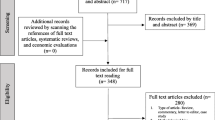Summary.
Objectives:
To assess socioeconomic differences between towns with and without water fluoridation, and to compare dental caries levels among socioeconomic strata in fluoridated and non-fluoridated areas.
Methods:
A countrywide survey of oral health performed in 2002–03 and comprising 34,550 children aged 12 years provided information about dental caries levels in 249 Brazilian towns. Socioeconomic indices, the coverage and the fluoride status of the water supply network of participating towns were also appraised. Multivariate regression models fitted the adjustment of dental caries levels and covariates to socioeconomic status and water supply. Inequalities in dental outcomes were compared in towns with and without fluoridated tap water.
Results:
Better-off towns tended to present a higher coverage by the water supply network, and were more inclined to add fluoride. Fluoridated tap water was associated with an overall improved profile of caries, concurrent with an expressively larger inequality in the distribution of dental disease.
Conclusion:
Suppressing inequalities in the distribution of dental caries requires an expanded access to fluoridated tap water; a strategy that can be effective to foster further reductions in caries indices.
Zusammenfassung.
Ist Trinkwasserfluoridierung wirksam, um Ungleichheiten bei Zahnkrankheiten zu reduzieren?
Untersuchungsziel:
Erfassung von sozioökonomischen Unterschieden zwischen Städten mit und ohne Trinkwasserfluoridierung und Vergleich der Zahnkaries-Prävalenz innerhalb verschiedener sozioökokonomischen Schichten in fluoridierten und nicht-fluoridierten Gebieten.
Methoden:
Eine landesweite Studie über Zahngesundheit aus den Jahren 2002–03, die 34,550 12-jährige Kinder umfasst, liefert Informationen über den Zahnkariesstatus in 249 brasilianischen Städten. Sozioökonomische Indices, die Abdeckung und der Fluoridstatus des Wasserversorgungssystems der teilnehmenden Städte wurden ebenfalls erfasst. In multivariate Regressionsmodelle wurden die Zusammenhänge von Zahnkaries und Kovariaten mit sozioökonomischem Status und Wassserversorgung untersucht. Ungleichheiten bei der Zahngesundheit in Städten mit und ohne fluoridiertem Leitungswasser wurden verglichen.
Ergebnisse:
Wohlhabendere Städte weisen ein tendenziell flächendeckenderes Wasserversorgungssystem auf und neigen eher zur Fluoridierung. Die Fluoridierung des Leitungswassers ist assoziiert mit einem allgemein besseren Kariesstatus und einer entsprechend deutlicheren Ungleichverteilung von Zahnkrankheiten.
Schlussfolgerung:
Ein verbesserter Zugang zu fluoridiertem Leitungswasser kann als eine Strategie zur Reduktion sozialer Ungleichheit in der Verteilung von Zahnkrankheiten angesehen werden.
Résumé.
La fluoration de l’eau est-elle efficace pour réduire les inégalités en santé dentaire?
Objectifs:
Identifier les différences socio-économiques entre les villes avec et sans fluoration de l’eau. Comparer les taux de carie dentaire des différents niveaux socio-économiques dans des régions avec eau fluorée et non fluorée.
Méthodes:
En 2002–03, une étude nationale portant sur la santé dentaire de 34,550 enfants âgés de 12 ans a fourni les taux de carie dentaire dans 249 villes brésiliennes. Les indices (?) socio- économiques, la qualité du réseau d’approvisionnement en eau potable et sa fluoration ont été également été mesurés. Les inégalités en matière de santé dentaire ont été analysées dans les villes avec et sans eau du robinet fluorée.
Résultats:
Les villes les plus prospères présentent un meilleur réseau d’approvisionnement en eau potable et ajoutent plus fréquemment du fluor à l’eau. L’eau du robinet fluorée est associée à une amélioration du taux de caries, mais aussi à une augmentation des inégalités de distribution de la carie dentaire.
Conclusion:
La suppression des inégalités en matière de caries dentaires requiert un accès universel à une eau du robinet fluorée. Une telle stratégie peut être efficace pour réduire les taux de caries.
Similar content being viewed by others
Author information
Authors and Affiliations
Corresponding author
Additional information
Submitted: 19 May 2005 Accepted: 26 March 2006
Rights and permissions
About this article
Cite this article
Peres, M.A., Antunes, J.L.F. & Peres, K.G. Is water fluoridation effective in reducing inequalities in dental caries distribution in developing countries? Recent findings from Brazil. Soz.-Präventivmed. 51, 302–310 (2006). https://doi.org/10.1007/s00038-006-5057-y
Published:
Issue Date:
DOI: https://doi.org/10.1007/s00038-006-5057-y




